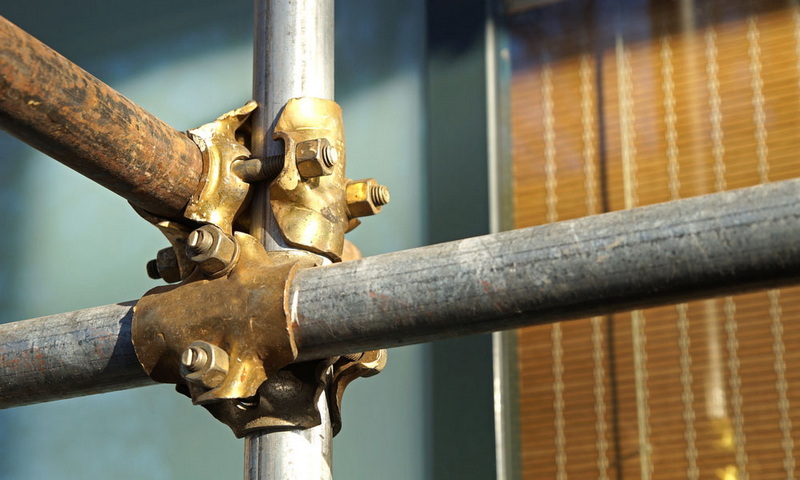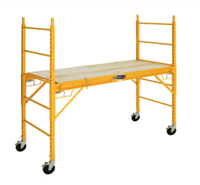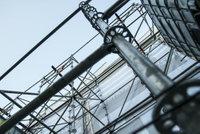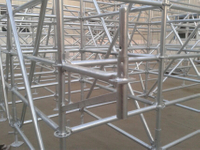Content Menu
● Understanding Tube and Clamp Scaffolding
● Key Features to Consider Before Buying
>> 1. Load Bearing Capacity and Strength
>> 2. Adjustability and Flexibility
>> 3. Compliance with Standards and Regulations
>> 4. Compatibility with Other Equipment
>> 5. Ease of Assembly and Disassembly
>> 6. Maintenance Requirements
● Applications of Tube and Clamp Scaffolding
● Safety Considerations
● Buying Tube and Clamp Scaffolding for Sale: Where to Look?
● Conclusion
● FAQ
>> 1. What materials are tube and clamp scaffolds made from?
>> 2. How high can tube and clamp scaffolding be safely erected?
>> 3. Are tube and clamp scaffolds safe to use?
>> 4. How long does it take to assemble tube and clamp scaffolding?
>> 5. How can corrosion be prevented on tube and clamp scaffolding?
Tube and clamp scaffolding is a versatile and widely used scaffolding system in construction and maintenance projects. Its adaptability to complex structures and irregular surfaces makes it a preferred choice for many contractors. If you are considering purchasing tube and clamp scaffolding for sale, there are several important factors to understand to ensure safety, compliance, and efficiency on your job site.

Understanding Tube and Clamp Scaffolding
Tube and clamp scaffolding, also known as tube and coupler scaffolding, is primarily composed of steel tubes and clamps (couplers) that connect these tubes at various angles. This system allows for flexible assembly, making it suitable for complex geometries and irregularly shaped structures. The main components include:
- Steel Tubes: Typically made of Q235 or Q345 steel, with diameters around 48.3 mm and wall thicknesses ranging from 3.2 mm to 4.0 mm, depending on the standard (EN, JIS, KS).
- Clamps (Couplers): Right-angle clamps for perpendicular connections and swivel clamps for joining tubes at any angle.
- Base Plates and Accessories: For stability and safety, including base plates, guardrails, ladder beams, and bracing systems.
Key Features to Consider Before Buying
1. Load Bearing Capacity and Strength
Tube and clamp scaffolding is known for its high strength and rigidity, capable of bearing heavy loads due to the use of steel or aluminum tubes. This makes it suitable for supporting workers, materials, and equipment safely on construction sites.
The load capacity depends on the quality and thickness of the tubes, the type of clamps used, and the overall design of the scaffold. For example, steel tubes with a wall thickness of 4.0 mm can support significantly higher loads than thinner tubes. When purchasing tube and clamp scaffolding for sale, always verify the manufacturer's specifications and certifications regarding load capacity.
2. Adjustability and Flexibility
One of the greatest advantages of tube and clamp scaffolding is its adjustability. The system can be assembled to various heights and widths, accommodating irregular surfaces and complex architectural features. Swivel clamps allow for connections at any angle, enhancing versatility.
This flexibility is particularly useful in restoration projects, industrial plants, or any site where the scaffolding must be adapted to non-standard shapes. Unlike modular scaffolding systems, tube and clamp scaffolding can be customized on-site to fit unique requirements.
3. Compliance with Standards and Regulations
Before purchasing, ensure the scaffolding meets relevant industry standards such as the British Standard EN 39, Navy Specification MIL-S-29180A, or local occupational safety regulations. Compliance ensures safety and legal adherence on the job site.
Non-compliance can lead to severe safety hazards and legal penalties. When buying tube and clamp scaffolding for sale, ask for documentation proving conformity to applicable standards. This includes load testing certificates, material quality reports, and safety compliance certificates.
4. Compatibility with Other Equipment
The scaffold should be compatible with existing platforms, clamps, and bracing accessories to form a cohesive and secure system. This compatibility is critical for efficient assembly and safety.
For example, if you already own certain scaffold platforms or guardrails, verify that the new tube and clamp scaffolding components will integrate seamlessly. Some manufacturers offer modular accessories designed specifically for their tube and clamp systems, which can simplify assembly and improve safety.
5. Ease of Assembly and Disassembly
Tube and clamp scaffolding requires skilled personnel for assembly due to the numerous components involved. However, the system is designed for relatively straightforward assembly and dismantling when proper tools and instructions are used.
The clamps must be tightened securely to avoid loosening during use, and tubes must be cut or adjusted precisely to fit the design. Training your crew or hiring experienced scaffolders is essential to ensure timely and safe erection and dismantling.
6. Maintenance Requirements
Regular inspection and maintenance are vital to prevent corrosion and structural failure. Cleaning, rust prevention (via painting or oiling), and storage considerations should be factored into your purchase decision.
Steel tubes and clamps exposed to weather can rust, weakening the scaffold over time. Applying protective coatings and storing components in dry conditions prolongs their lifespan. When buying tube and clamp scaffolding for sale, inquire about recommended maintenance procedures and available protective coatings.
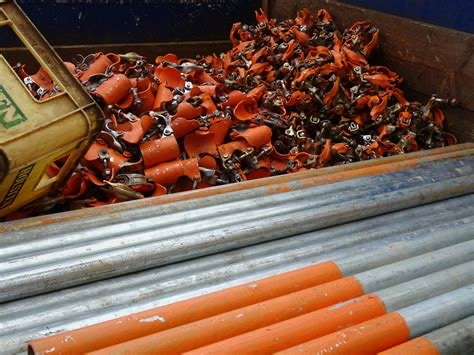
Applications of Tube and Clamp Scaffolding
Tube and clamp scaffolding is widely used in:
- Petrochemical Plants and Refineries: The complex piping and structural layouts require scaffolding that can be adapted to irregular shapes.
- Power Plants: For maintenance and installation of heavy equipment.
- Complex Building and Restoration Projects: Historical buildings with intricate facades benefit from the flexibility of tube and clamp scaffolding.
- Temporary Structures: Ramps, sheds, stands, and stages where customized scaffolding is necessary.
Its ability to be assembled in multiple directions makes it ideal for irregular surfaces and complex geometries.
Safety Considerations
Safety is paramount when working with scaffolding. Key safety practices include:
- Ensuring scaffolds can support at least four times the intended load.
- Using guardrails, mid-rails, and toe boards on scaffolds over 10 feet high.
- Inspecting tubes and clamps for damage before use.
- Erecting scaffolds on firm, level surfaces capable of supporting the load.
- Employing qualified personnel supervised by competent supervisors for assembly and dismantling.
Additionally, always use fall protection equipment and ensure proper training for all workers using the scaffolding. Regular safety audits and inspections should be part of your scaffold management plan.
Buying Tube and Clamp Scaffolding for Sale: Where to Look?
When searching for tube and clamp scaffolding for sale, consider:
- Reputable Manufacturers: Choose suppliers with proven track records and certifications.
- New vs. Used: New scaffolding ensures compliance and longevity, while used scaffolding can be cost-effective if inspected thoroughly.
- Customization Services: Some suppliers offer custom cutting and pre-assembly services.
- After-Sales Support: Training, maintenance advice, and spare parts availability are important.
Online marketplaces, construction equipment dealers, and specialized scaffolding companies are good starting points.
Conclusion
When buying tube and clamp scaffolding for sale, it is crucial to consider load capacity, adjustability, compliance with safety standards, compatibility with accessories, ease of assembly, and maintenance needs. This scaffolding type offers unmatched flexibility for complex and irregular construction projects but requires skilled handling and regular safety checks. Properly selected and maintained tube and clamp scaffolding ensures a safe, efficient, and adaptable working platform for a wide range of industrial and construction applications.
FAQ
1. What materials are tube and clamp scaffolds made from?
Tube and clamp scaffolds are primarily made from steel (Q235 or Q345) or aluminum tubes, with clamps made of steel to ensure strength and durability.
2. How high can tube and clamp scaffolding be safely erected?
Scaffolds exceeding 10 meters (33 feet) in height must be engineered and designed by qualified professionals to ensure safety and stability.
3. Are tube and clamp scaffolds safe to use?
Yes, when properly installed, maintained, and used according to safety standards, tube and clamp scaffolds are safe and reliable for construction work.
4. How long does it take to assemble tube and clamp scaffolding?
Assembly time is longer compared to modular scaffolds due to the number of components and the need for skilled labor, but the system offers superior flexibility.
5. How can corrosion be prevented on tube and clamp scaffolding?
Regular cleaning, application of protective coatings such as paint or oil, and proper storage help prevent corrosion and extend scaffold life.
